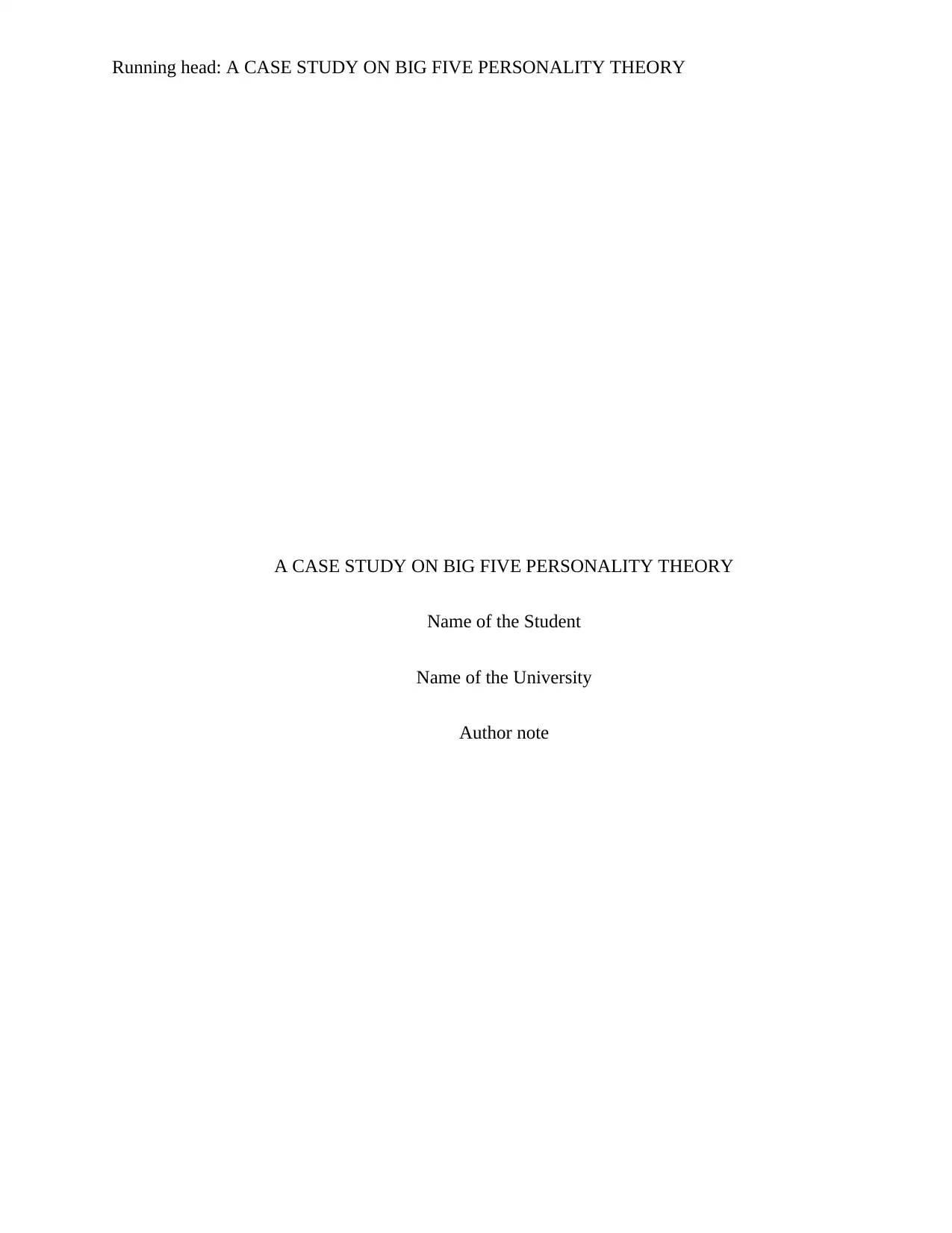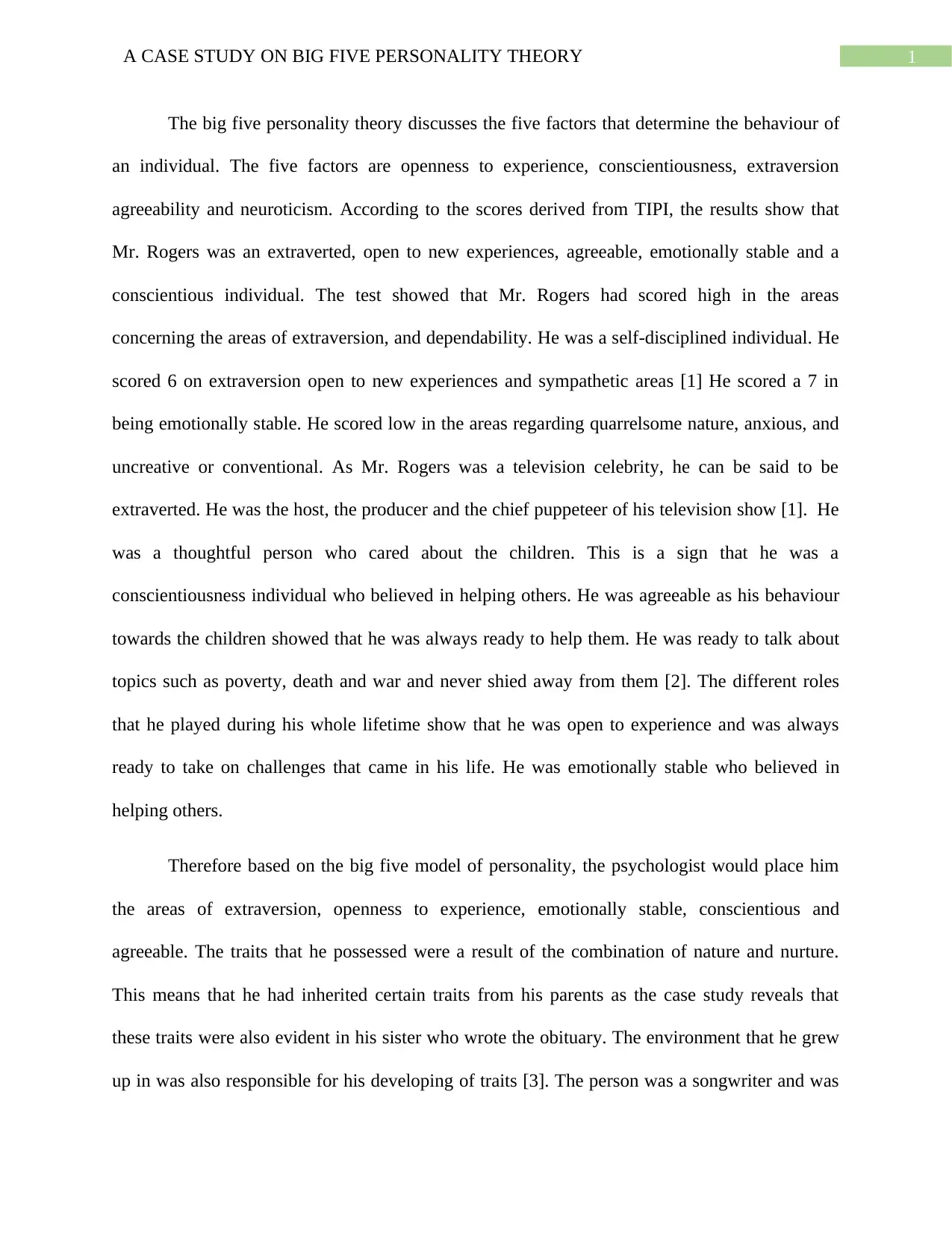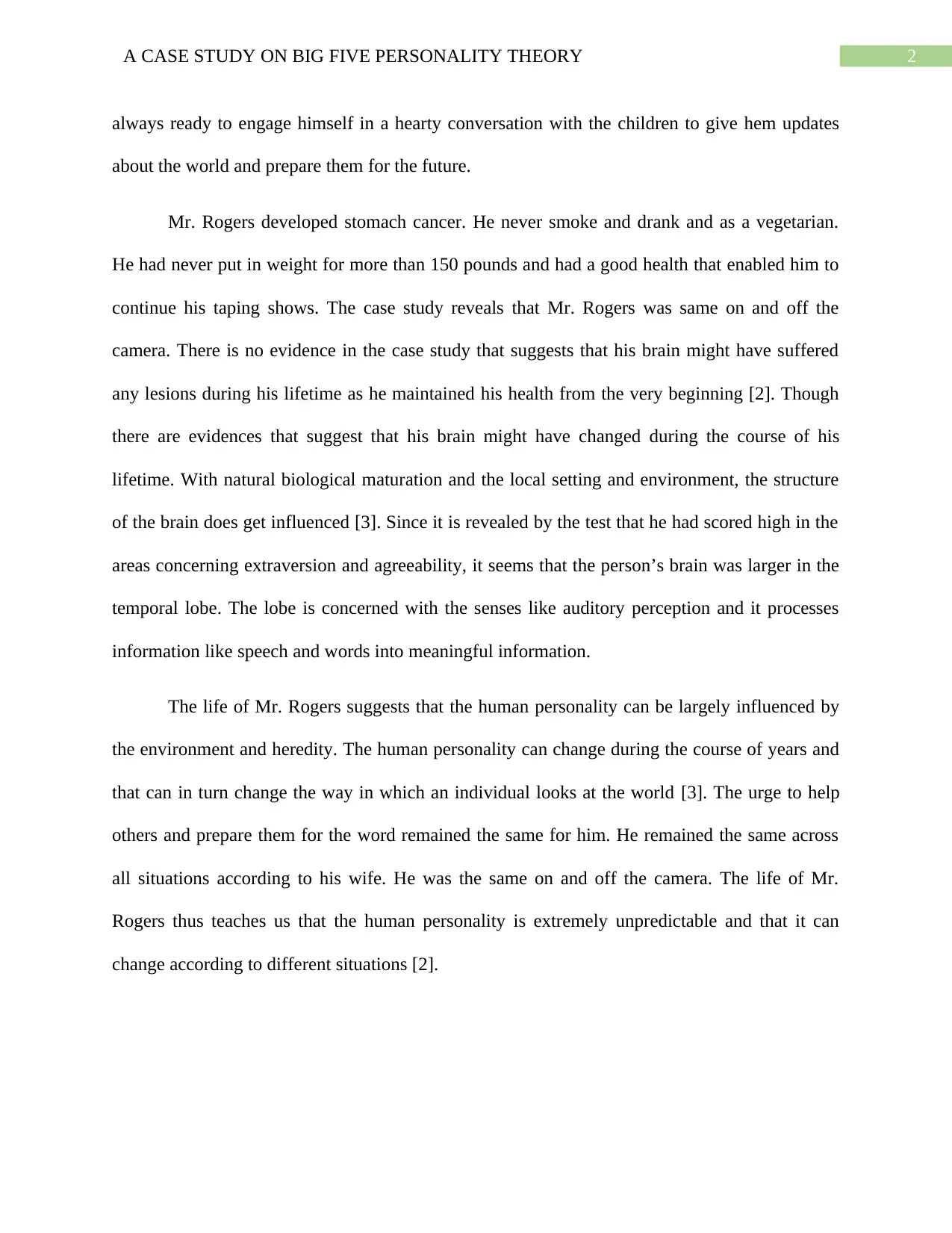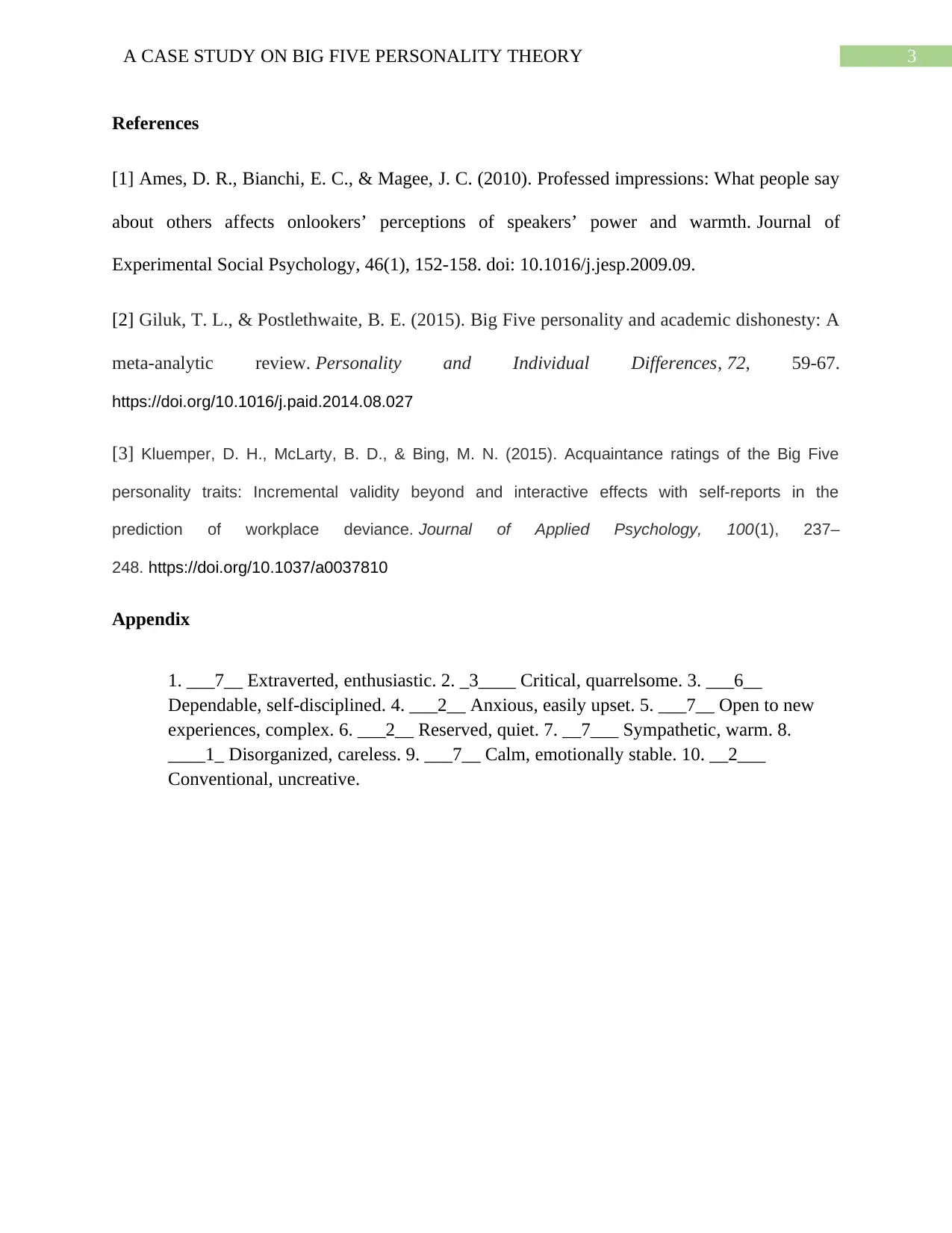Spring 2020: HUMA 140 - Mr. Rogers Personality Analysis
VerifiedAdded on 2022/08/14
|4
|994
|19
Report
AI Summary
This report presents a case study analyzing the personality of Mr. Fred Rogers based on the Five Factor Model (FFM). The analysis draws upon information from his New York Times obituary and his sister's obituary to assess his traits across the five dimensions: openness to experience, conscientiousness, extraversion, agreeableness, and neuroticism. The report examines Mr. Rogers' disposition, placing him on each dimension and identifying facets where he scored high or low. It explores the influence of both heredity and environment on his personality, comparing his traits to those of his sister. Furthermore, the report speculates on potential changes in Mr. Rogers' brain throughout his lifetime, considering biological maturation and environmental factors. The findings suggest that Mr. Rogers exhibited high levels of extraversion, openness to experience, conscientiousness, agreeableness, and emotional stability, reflecting a combination of inherited traits and environmental influences. The report also references the potential for larger brain regions associated with his personality traits, such as the temporal lobe. Overall, the report concludes that Mr. Rogers' personality was largely shaped by a combination of nature and nurture, and that human personality is dynamic and subject to change.
1 out of 4











![[object Object]](/_next/static/media/star-bottom.7253800d.svg)